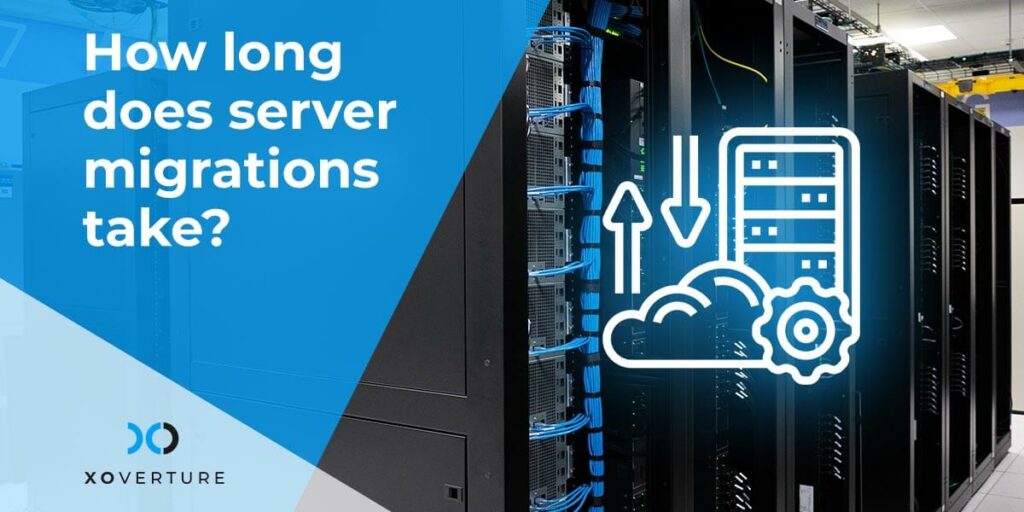Server migration is a highly strategic undertaking that must be completed without disrupting corporate operations, SLAs, data performance, or availability. There can be several reasons for it, such as cost-cutting initiatives, regulatory requirements, service risk mitigation, an unstable environment caused by an attack or disaster, and many more. In this guide, let us understand what a server migration is, its best practices, different types of server migrations, and how long does server migrations take.
What is Server Migration?
Basically, server migration is the process of moving data from one server to another. It comprises selecting a server and configuring it to take the place of your current one.
Numerous organizations that rely on data will need to migrate their servers at some point. Since the data in question is very sensitive and confidential, appropriate planning is required to ensure that it is properly transferred.
So, when and why do you need to migrate your servers? The following is a list of all possible causes:
- Old and slow server computer.
- Insufficient space for the Server to store data and applications.
- Upgrading Server data to a new one.
- To protect company data from Server crashes or outdated Server machines.
- Improve the speed of the Server computer, and optimize company website loading performance.
Server Migration Best Practices
There are several critical best practices to keep in mind regardless of which form of server migration a company chooses. These include the following:
Before Starting Create and Test A Backup
During the migration, there is always the possibility that something will go wrong. No company can afford to lose critical data, therefore having a tested backup is essential before getting started.
Make A Plan and Stick To It
When disruptions occur, one of the biggest mistakes data managers can do is to abandon the migration process. Despite the fact that the migration process can be difficult at times, it is critical to follow the plan.
Test at Each Phase
Throughout the planning and design phases, testing is essential. Testing is also necessary during implementation and maintenance. Testing can assist in achieving the best possible result.
Different Types of Server Migrations
Following are the different types of server migrations:
Mail Server Migration
The process of extracting and migrating all emails, appointments, contacts, and other tasks from one email host to a new email host is known as mail server migration.
Virtual Server Migration
When you move the resources of a physical server, such as its operating system, files, data, and applications, to a new virtual machine hosted on a virtualized platform, you’re conducting a virtual server migration.
Azure Cloud Migration
Microsoft Azure is an Infrastructure-as-a-Service platform that gives large and small enterprises access to the benefits of a public cloud. Migrating to the public cloud can boost productivity while lowering costs.
Cloud Server Migration
This is the process of migrating all of an organization’s data, apps, business systems, and data from on-premises systems to a cloud environment.
How Long Does Server Migration Take?
Server migration time is dependent on many factors. Many of these things depend on the team conducting the migration.
- Amount of data to be migrated – The more data the longer the migration time is.
- Accesses or rather lack of them – Clients frequently forget or are unaware of previous accesses to the present server, it takes a lot of time to dig into this information, because it is important.
- Speed of servers, Internet connections – The source server, from which data is transferred, is sometimes the bottleneck, and the time it takes to transmit files is simply too long.
- Outdated software – Migrating from a website that hasn’t been updated in a long time and won’t work with the latest technologies after migration.
- A realistic timeline to expect for more complex but regularly used email, document management, and communications systems is 1-2 months.
- The same timeframe applies to migrating more complicated server configurations and connecting your data center and networks to the cloud. This component of the migration would be done separately from the system migration, therefore all of the above would most likely take 4 months or more to complete.
- You’d also have to do the necessary testing and train workers to work in a cloud environment, which might add even more time to the process.
How can XO Help?
XO has a great team of migration experts who can migrate your servers or infrastructure in real-time with zero data loss and downtime. We also provide a detailed report of the migration process. You can request a migration at any time with XO. After all of the data has been migrated, we test to ensure that the process was a success and that no parts have been corrupted during the process.






